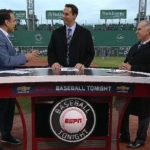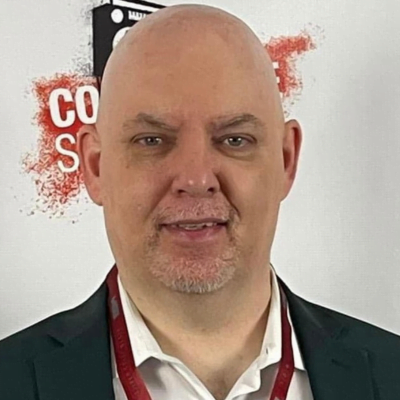It’s been called a bloodbath. The demise of a once great brand. The end of ESPN, and a few other expletives that I’d rather not repeat in this column.
Last week ESPN put into action what had been expected for the past month, a parting of the ways with many talented and dedicated sports media professionals. The total amount of people let go by the company is estimated to be near 100. As a result, a high number of qualified individuals now find themselves searching for future opportunities despite executing their jobs the way they were asked to.
Much has been written about ESPN during the past week due to the immediate shock of these layoffs. Some of the articles have been extremely insightful. From Dave Zirin’s column to Glen Macnow’s to Forbes’ story and the Wall Street Journal’s, every media outlet has shared a perspective on ESPN’s troubles. I’m just the latest to attend the party. I recognize that I’ve arrived a little late, but I wanted to collect my thoughts and make sure I was ready to mingle before putting on my three piece suit and invading the dance floor.
This is a difficult subject to write about because it’s extremely depressing. When stories like this are generated they add to the perception of ESPN’s sports media empire being on life support. That’s utterly ridiculous when you take into account that the current valuation of ESPN is 50 billion dollars and the Disney stock price is closing in on its all-time high. But when negative headline after negative headline invades the digital universe, brands earn labels that aren’t easy to recover from.
Over the years I’ve had the good fortune of getting to know some of the key people who were affected by last week’s layoffs. In addition to being leaders in their respective fields, they’ve been quality people too.
I understand that this is relevant news that deserves to be examined, but being served a daily reminder that you’ve lost your dream job and are among the unemployed, as others debate publicly whether or not you should’ve been terminated and if you provide any value to potential employers can’t be easy to digest.
We often assume that the news is just news and those who are part of the latest cycle should just “toughen up and deal with it” but when it’s your name and livelihood that have been altered, it’s not always easy to detach yourself and move on. People after all are human beings with very real emotions and these kind of life changing decisions do have lasting impressions.
Upon learning about the cuts while attending the National Association of Broadcasters conference in Las Vegas last week, it seemed that many on social media were rejoicing over familiar names and faces being given their walking papers. Others called for the worldwide leader to expand its list and take a few others.
As I sifted thru the responses, I couldn’t help but be disappointed. I realize that the style of each host, anchor, reporter and analyst is received differently, but rather than rooting for someone to be unemployed, on the street, and permanently barred from the sports media industry, there is another alternative – tune them out.
I love this business as much as anyone but let’s be honest, we aren’t curing cancer. This is simply entertainment. If an individual doesn’t provide you with the experience you’re searching for, it’s OK to change the channel or not click on their story.
The goal of every media professional is to generate reaction to their work. If the audience is moved enough to share a favorable or negative response, then the broadcaster has done their job. It’s when viewers, listeners or readers don’t respond that outlets pay closer attention. It may be tempting to verbally destroy someone on social media who’s content you don’t enjoy, but when you ignore their existence and have no opinion to share of their work, it sends a much louder message.
That’s why I believe it’s silly to play the game of “Why would ESPN fire Ed/Trent/Jayson instead of Stephen/Jemele/Michael?” Unless you’re on the inside and understand the way each person is viewed, paid, and rated, it’s a wasted discussion.
If you’ve read my work over the past two years then you’re aware that I’ve been critical of a few things ESPN has done. I believe that’s an important responsibility for anyone who chooses to write, report, and share opinions on the media industry. No matter how many friendships I hold inside the company or how much I prefer to see people succeed there, when it’s time to tackle sensitive issues my honesty and integrity are not negotiable.
Do I think ESPN has made strategic mistakes in recent years? Yes. Do I consider them as formidable as they once were? No. But if they fail it hurts the entire sports media industry. That alone should be reason enough to hope they solve their problems and create a brighter future.
Since this topic is extremely popular and contains multiple angles worthy of examination, I’ve attempted to break it up into ten different sections. Here are what I consider to be the key takeaways from last week and the questions that ESPN must answer going forward.
 Is The Era of Invincibility Over?: In the span of seven days, two of the biggest media giants on the planet were significantly damaged. FOX News dropped its biggest television star (Bill O’Reilly) and ESPN halted the careers of nearly 100 sports media professionals.
Is The Era of Invincibility Over?: In the span of seven days, two of the biggest media giants on the planet were significantly damaged. FOX News dropped its biggest television star (Bill O’Reilly) and ESPN halted the careers of nearly 100 sports media professionals.
It was once considered an impossible task to challenge these two brands, yet both are now showing vulnerabilities. While changes occurred for different reasons, the bottom line is that each company is weaker today than they were last week. Whether or not that continues and their competitors take advantage of it in the future remains to be seen, but these moves remind us that even the best can be rattled when they make a series of errors.
It’d be interesting to run a poll and ask industry folks who gave Jamie Horowitz and FOX Sports 1 zero chance of challenging ESPN if they still feel the same way now. Something tells me many would reconsider their position.
Although ESPN continues to offer more original sports programming and play by play than any other network, and employs the largest group of sports broadcasters in the industry, their public profile has been significantly damaged. It’s not a question if ESPN remains the top rated performer among sports networks. It’s whether or not they can retain/grow subscribers and advertising revenues and lower expenses.
If the company’s current trend continues, and another sports network or new competitor such as Amazon, Netflix, Facebook, Apple or Google enters the mix and snags a play by play agreement in the future, the stranglehold ESPN has held on the rest of the industry could be escaped. That would make things instantly different.
 Personalities Matter Most: It was hard to ignore the messages ESPN sent with their personnel decisions last week. The value of writing, reporting, analysis and anchoring pales in comparison to high profile personalities who generate buzz by delivering ear shattering opinions.
Personalities Matter Most: It was hard to ignore the messages ESPN sent with their personnel decisions last week. The value of writing, reporting, analysis and anchoring pales in comparison to high profile personalities who generate buzz by delivering ear shattering opinions.
To be fair, ESPN still employs many exceptional reporters, anchors, analysts and writers. If the report holds true of Adrian Wojnarowski leaving Yahoo Sports to join the company, that’d be recognized by many as a homerun hire.
But Woj’s situation aside, the majority of people impacted last week were known best for their information and analysis and less for their personalities. Guys like Jayson Stark, Marc Stein, Andy Katz and Ed Werder have been trusted reporters for nearly two decades and their departures instantly weaken the network’s credibility.
For decades ESPN built its reputation off of providing highlights, analysis, and information. When the majority of individuals departing the nation’s top sports network are involved in those areas, and sacrificed before others with a stronger flair for the dramatic, it indicates that the times have changed, and Bristol executives have placed higher premiums on other roles.
 Hockey Isn’t Important: The commitment to hockey coverage was already minimal on ESPN, but with the exits of Scott Burnside, Joe McDonald and Pierre LeBrun it’s decreased even more. With John Buccigross’ future also up in the air, it’s hard to wrap your arms around the network’s vision for presenting the coolest game on ice.
Hockey Isn’t Important: The commitment to hockey coverage was already minimal on ESPN, but with the exits of Scott Burnside, Joe McDonald and Pierre LeBrun it’s decreased even more. With John Buccigross’ future also up in the air, it’s hard to wrap your arms around the network’s vision for presenting the coolest game on ice.
At this point, Barry Melrose and Steve Levy are two of a very select few with a passion for the NHL at ESPN. Hockey may not provide the interest that other major sports do, but you’d expect a full fledged sports network to cover the game with more than 2-3 quality people.
It’s possible that ESPN has other people in mind internally who they want to groom and feature more prominently, or maybe they’ll strike a deal with TSN, the NHL Network or NBC to share content as they recently did with the MLB Network. As of now though they are significantly weaker, which isn’t saying much, given their previous standing.
 Baseball Coverage Decreases: ESPN has produced some of the finest baseball content on television during its existence, but despite its history of creating stellar original programming around America’s favorite pastime, something clearly went astray. In one fell swoop, the network released analysts Dallas Braden, Doug Glanville, and Raul Ibanez, and other notable contributors Jim Bowden, Jayson Stark, Dave O’Brien and Jim Caple. A few beat reporters were also laid off.
Baseball Coverage Decreases: ESPN has produced some of the finest baseball content on television during its existence, but despite its history of creating stellar original programming around America’s favorite pastime, something clearly went astray. In one fell swoop, the network released analysts Dallas Braden, Doug Glanville, and Raul Ibanez, and other notable contributors Jim Bowden, Jayson Stark, Dave O’Brien and Jim Caple. A few beat reporters were also laid off.
Adding to the overhaul was the network’s decision to partner with the MLB Network to air its daily baseball program Intentional Talk on ESPN. It’s not everyday that the worldwide leader in sports plays the role of an affiliate, but in this instance they did. By securing that agreement it gave ESPN the flexibility it needed to send its longtime baseball program Baseball Tonight to a slow death. BBTN now airs each Sunday prior to the Sunday night game of the week.
MLB Network has certainly developed high quality baseball content since its inception. To think though that they’d contribute to the demise of one of ESPN’s most recognized programs is surprising. This leaves many now wondering, is ESPN a content creator of baseball programming or the MLB Network’s lead distributor?
 The Future of ESPN Radio: The once dominant sports radio network is going thru an identity crisis. Is ESPN Radio committed to being a major market player? Is its main function to provide support to small market operators with lesser budgets? Or is the long-term strategy to worry less about terrestrial radio partnerships and focus more on creating television content and on-air programming for the company’s owned and operated radio brands and digital platforms?
The Future of ESPN Radio: The once dominant sports radio network is going thru an identity crisis. Is ESPN Radio committed to being a major market player? Is its main function to provide support to small market operators with lesser budgets? Or is the long-term strategy to worry less about terrestrial radio partnerships and focus more on creating television content and on-air programming for the company’s owned and operated radio brands and digital platforms?
As the network attempts to regain its footing, one key challenge it must conquer is offering consistency on its airwaves. Change often breaks up a listener’s routine and in the past two years the company has fed a steady diet of it to its audience and affiliates. That makes it harder to connect to the personalities and shows plus it gives local operators (especially in markets outside of the top 25) anxiety because much of their success stems from the network’s ability to deliver a strong consistent lineup.
Along those lines, the network has almost completely overhauled its entire lineup during the past 2 years. For starters, Colin Cowherd left the 10a-1p slot and was replaced by Dan Le Batard. With Le Batard moving up in the schedule, his afternoon drive slot was turned over to Bomani Jones who had previously hosted evenings. As Jones vacated the evening hours, Jalen Rose and David Jacoby, and Sarah Spain and Israel Gutierrez became fixtures at night. Spain and Izzy were added to the schedule when Jorge Sedano moved to Los Angeles and Jen Lada was switched to a different role. The one consistent contributor to the network’s evening programming has been Freddie Coleman, although even he was switched from hosting solo to joining forces with Ian Fitzsimmons.
But wait there’s more.
Scott Van Pelt left the 1p-4p slot with Ryen Russillo to host the late night SportsCenter. He was replaced by Danny Kanell who was let go during last week’s cuts. Russillo is now hosting solo until the company either adds a new co-host, places the show’s future in his hands or goes a different direction altogether and moves him elsewhere. Noise was made in recent months of Stephen A. Smith being added nationally in the 1p-4p slot (he’s already hosting during those hours on ESPN NY and ESPN LA), and although that possibility can’t be discounted, birds have stopped chirping about it recently.
All of these changes don’t even include the network’s most publicized move. ESPN is expected to break up Mike and Mike and the early word is that Trey Wingo and Mike Golic Jr. will join Golic Sr. for a revamped morning show. If Golic Jr. does in fact move into mornings with his father and Trey, that would explain the network’s decision last week to part ways with Robin Lundberg who recently teamed up with Jr. during the early morning hours.
The lack of consistency has caused concern among numerous affiliates. Those who have adopted the ESPN moniker aren’t likely to change affiliates because establishing a new brand name could prove costly. Others will explore adding local programs to make up for a lack of confidence in the network’s offerings. Some may even drop the network for other options.
It’s understood that the radio business isn’t driving ESPN to profitability. A sharp decision was made recently to add Justin Craig to the programming team, but the network is going to have to work extra hard over the next 12-24 months to convince stations that they’re headed in the right direction and can be trusted to provide consistently great programming.
 Wrong Space Wrong Time: It’s peculiar that during a time when ESPN is panicking about its future and trying to reinvent its business model, it continues to invest in platforms that are less valued by their audience. Taking risks and introducing new personalities and forms of programming is appreciated but you also have to take calculated risks. Simply put, you leap during times of strength, not weakness.
Wrong Space Wrong Time: It’s peculiar that during a time when ESPN is panicking about its future and trying to reinvent its business model, it continues to invest in platforms that are less valued by their audience. Taking risks and introducing new personalities and forms of programming is appreciated but you also have to take calculated risks. Simply put, you leap during times of strength, not weakness.
As I looked at the list of names who were affected last week I couldn’t help but wonder if some of the departures could’ve been prevented had the company not dumped resources into platforms with less of a connection to their core audience. The work done on fivethirtyeight, The Undefeated, ESPNU, and the Longhorn Network may be solid, but they’re luxuries that the network can afford to live without.
I have applauded the network for taking a chance with The Undefeated. I feel they employ some talented writers and deliver quality content. The other brands I mentioned I have less of a personal connection to. But even if I felt they were exceptional, if my golden goose was in jeopardy of being harmed, I’d focus first and foremost on making sure it was protected before sinking resources into other areas that are less necessary.
It’s convenient to blame all of ESPN’s problems on cord cutting and bad play by play deals. Each have presented real challenges for the company and undoubtedly influenced the latest series of cutbacks. However, we can’t ignore and discount how the network has invested dollars in other niche spaces. Were these platforms more important than retaining key contributors to the network’s most important properties? I’m not sure they were.
 Too Political: Sports is supposed to provide an escape from the pressures and negativity of real life. But as we’ve discovered over the past decade, mixing the two has become a reoccurring theme.
Too Political: Sports is supposed to provide an escape from the pressures and negativity of real life. But as we’ve discovered over the past decade, mixing the two has become a reoccurring theme.
Are there times when it’s justified? Absolutely. But when personalities begin to share personal thoughts on issues that can sever a relationship with a loyal audience, that’s where things get complicated. Many would love for ESPN to return to what it was in the 1990’s, but 2017 isn’t 1997, and ESPN isn’t going in that direction whether we want them to or not. In fact, they plan to be even more open about their personal beliefs.
Therein lies one of the network’s biggest dilemmas. How do you balance being open and honest with the audience without causing them to disconnect from your product? If you fail to acknowledge a social interest story that has everyone talking, it can lead to less eyeballs on your content. But if you do engage in discussion, that too can lead to immediate tune out.
Linda Cohn appeared last week on WABC in New York with Bernard McGuirk and Sid Rosenberg, and added that she felt the company was paying the price for being out front with its political positions. Although her opinions don’t reflect how everyone in the company feels, one thing she said in particular stood out.
“Old school viewers were put in a corner and not appreciated with all of these changes,” said Cohn. “They (ESPN) forgot their core. You should never forget your core, and be grateful for your core group.”
ESPN has to decide who it wants to be. Is it a full service sports media company that values its role as the world’s biggest distractor from everyday troubles. Or is it looking to assert social influence and stretch beyond the boundaries of sports?
Here’s the issue with the latter. Sports and politics don’t blend well. This country once enjoyed a deep connection to ESPN even as real events such as 9/11, the war in Iraq and Afghanistan, and a highly publicized white house sex scandal took place. Sports remained the focus, and a necessary distraction from the events of the world that left many of us shaken.
Whether the company loses 5%, 10% or 50% of its audience due to sharing political opinions and exploring divisive content, the question is, why is that worth it? It’s one thing to have the President fill out an NCAA tournament bracket, and another to turn on the ESPY’s and see Caitlynn Jenner receiving the Arthur Ashe Courage Award.
There are certain situations that feel right, and others that don’t. ESPN can help itself by using better judgment, regardless of how large or small the percentage is of fans who are turned off by the company’s current positioning.
 Play By Play Deals: Between the cuts in 2015 and this latest series of moves, sports leagues have been put on notice by the worldwide leader in sports. Paying astronomical rights fees for TV programming as media consumption shifts to digital platforms and large amounts of staff are lost, doesn’t appear to be a winning formula. ESPN may be bound by its existing deals, but they’ll be seeking economic relief when it’s time to discuss future arrangements.
Play By Play Deals: Between the cuts in 2015 and this latest series of moves, sports leagues have been put on notice by the worldwide leader in sports. Paying astronomical rights fees for TV programming as media consumption shifts to digital platforms and large amounts of staff are lost, doesn’t appear to be a winning formula. ESPN may be bound by its existing deals, but they’ll be seeking economic relief when it’s time to discuss future arrangements.
It’s always possible that when push comes to shove ESPN caves in and continues to pay exorbitant fees to retain the NFL, NBA and MLB, but to commit over 5 billion dollars per year on play-by-play in the next go around seems like a frightening idea at best.
One thing to take into account is that although the network may not reap the financial benefits the way it once did, it still remains profitable. No matter how much the expenses hurt, ESPN understands that live sports programming is their most important asset.
When their current deals expire they’ll arrive at the negotiating table with the blood of 400-500 eliminated positions on their hands, but whether or not that’s enough to justify a reduction in rights fees remains to be seen. You can bet that FS1, Turner Sports, CBS, FOX and NBC will want in on the action too, but they’ve had a front row seat to ESPN’s challenges and are aware that one poor business decision can cripple their business.
What we don’t know is how valuable these sports networks will consider the television rights as compared to streaming. The digital space is also likely to attract competition from other non-traditional media groups.
While it’s a given that each media outlet will cry poverty and languish over the rising cost of rights fees, it’s hard to believe that when faced with the possibility of losing its most valuable programming ESPN won’t do what professional owners do and find a few extra nickels and dimes at the last minute. The only question is how many will they pony up to retain their rights?
 John Skipper’s Legacy: ESPN’s President and co-Chairman has held those titles since January 2012, and been a part of every key decision involving the network’s play by play rights, company layoffs, and the subtractions of some key on-air talent. He’s bright, engaging, forward thinking, and projects a great confidence for the brand’s future.
John Skipper’s Legacy: ESPN’s President and co-Chairman has held those titles since January 2012, and been a part of every key decision involving the network’s play by play rights, company layoffs, and the subtractions of some key on-air talent. He’s bright, engaging, forward thinking, and projects a great confidence for the brand’s future.
During his time at the top there have been noticeable changes. The company has demonstrated a strong commitment to diversity, SportsCenter has been redesigned, anchors have been encouraged to share their personal connections to their favorite teams, political influence has infiltrated numerous on-air and online conversations and events (some good, some bad), and the network has included WWE programming in its content strategy. We’ve also seen ESPN become more aggressive when criticisms have been directed at the network’s people and programming.
Some say Skipper was dealt a bad deck of cards. Others say he’s made the most out of impossible situations. The rest remain split on whether his tenure as ESPN’s top executive has been a success or failure. Although the network has received more negative press in recent years than at any point in its history, it’s also remained the undisputed leader in sports media. Profits may be down compared to previous years, but ESPN continues to register in the black which many say is a testament to Skipper’s leadership during tumultuous times.
Providing a letter grade for his performance may not be possible at this time, but the next year will tell us a lot about where the company is heading. If ESPN emerges from the fire with no sign of trauma, the short-term discomfort will be seen as a necessary part of the maturation process towards making ESPN whole again. If though the company experiences life threatening injuries, it could signal the beginning of the network’s fall. Whichever way it turns out, Skipper will earn the credit or blame for it.
 Can ESPN Be Fixed? The answer of course is yes, but it’s much bigger than just adding top talent, familiar faces and programming which suits our desires. If tomorrow the company followed up the addition of Woj with an announcement that deals had been struck with Dan Patrick, Peter King, and Rich Eisen we’d say they were making great decisions to improve their quality. But that doesn’t solve their economic challenges or the reality of a world spending less time with programs and splintering their interests across multiple platforms.
Can ESPN Be Fixed? The answer of course is yes, but it’s much bigger than just adding top talent, familiar faces and programming which suits our desires. If tomorrow the company followed up the addition of Woj with an announcement that deals had been struck with Dan Patrick, Peter King, and Rich Eisen we’d say they were making great decisions to improve their quality. But that doesn’t solve their economic challenges or the reality of a world spending less time with programs and splintering their interests across multiple platforms.
As Colin Cowherd mentioned during a radio interview last week with “The Bull and Fox” on 92.3 The Fan, the downward spiral for ESPN began when the company committed massive dollars to rights deals, and the consumption of media content started to shift from television to digital devices. To ESPN’s credit, they’ve built their infrastructure to be attractive across all platforms, but when the majority of income comes from subscriber fees and advertising revenues, it becomes harder to provide the same profitability.
The setbacks that have stunted ESPN’s growth remind me of what the newspaper business encountered over a decade ago. Many in the print industry understood the importance of shifting their content into the online space, but when those daily and weekly subscriptions declined, along with newspaper advertising dollars, an economic blow was impossible to avoid.
Work begins immediately to do more work with less bodies, increase advertising dollars, secure new digital revenue streams, and of course, reduce the costs of future play by play deals. It won’t be easy, but ESPN remains in the driver’s seat because it’s still a massive brand with worldwide appeal and it produces big results.
Don’t think for a second that the major sports leagues don’t understand the value they receive in return for having their programming air on ESPN’s channels too. If they need to be reminded, Skipper and his team can put them in touch with NHL commissioner Gary Bettman.
We have no way of knowing what the world will look like in 1 year, 2 years, 5 years or 10 years, but for the sake of all of us working in the sports media industry, let’s hope ESPN makes the right choices. One major misstep could lead to a lot more harm than 100 layoffs, and those are bad enough already.

Jason Barrett is the President and Founder of Barrett Media since the company was created in September 2015. Prior to its arrival, JB served as a sports radio programmer, launching brands such as 95.7 The Game in San Francisco, and 101 ESPN in St. Louis. He also spent time programming SportsTalk 950 in Philadelphia, 590 The Fan KFNS in St. Louis, and ESPN 1340/1390 in Poughkeepsie, NY. Jason also worked on-air and behind the scenes in local radio at 101.5 WPDH, WTBQ 1110AM, and WPYX 106.5. He also spent two years on the national stage, producing radio shows for ESPN Radio in Bristol, CT. Among them included the Dan Patrick Show, and GameNight.
You can find JB on Twitter @SportsRadioPD. He’s also reachable by email at Jason@BarrettMedia.com.






